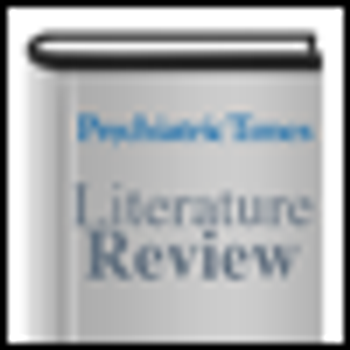
Mindfulness training is a viable treatment tool that rivals psychopharmaceutical agents for the treatment of addiction, anxiety, depression, and other psychiatric disorders.

Mindfulness training is a viable treatment tool that rivals psychopharmaceutical agents for the treatment of addiction, anxiety, depression, and other psychiatric disorders.

For patients with treatment-resistant depression-especially geriatric patients-ECT is a viable treatment option . . . one that should no longer be relegated to the option of last resort.

Emil Kraepelin diagnosed the paranoid, catatonic, and hebephrenic forms of dementia praecox, a disease he created.

Insomnia-a sleep disorder that can pose impairments far more debilitating than than problems with cognition (eg, difficulty processing, unclear thinking).

Both positive and negative symptoms of schizophrenia combined with those of a mood disorder led to a psychiatric diagnosis; later, a neurological diagnosis of anti–NMDA receptor autoimmune encephalitis was made.

In line with adolescents' interest in interactive video games, a computerized cognitive-behavioral therapy intervention that is an interactive fantasy game for depressed adolescents has been developed.

Planck's Law of Generations: scientific change doesn't happen by changing minds, but by changing generations.

Mental rigidity can occur at any age, while wisdom and experience are hard-won--over time.

Movement abnormalities and psychiatric symptoms often overlap and exacerbate one another. Can psychopharmacological agents induce movement disorders?

Newtown’s loss has finally forced us to look more deeply at violence and the treatment of mental health within our society.

Here's to the lovely trees of Jersey, my home . . . town streets lined with linden and larch, . . . poplar and elm, flowered locusts scenting

Being a Therapist features intimate portraits of psychotherapists in their own work spaces. An excerpt of his interview with Terry Smolar, PhD, follows.

A list of recent articles highlighting the complexity of psychiatric and systemic illness, both in terms of overlapping clinical presentation and in the degrees to which systemic illness and psychiatric illness affect each other.

This article reviews the diagnostic criteria for both myalgic encephalomyelitis and fibromyalgia and describes how to differentiate them from depressive and anxiety disorders, the psychiatric conditions with which they are most often confused.

Drug interactions are more frequent in elderly patients because more medications are taken. In addition, drug interactions may be more serious because of insufficient physiological reserves. When new medications are started or stopped in elderly patients, it is very important to take note of potential interactions with other drugs or foods.

Diabetes mellitus and depression symptoms are associated with with decreased self-care and less adherence to exercise, medications, smoking cessation, and eating a healthy diet.

The goal of this article is to improve recognition of comorbid psychiatric and movement disorders and to help the reader formulate a management strategy using a multidisciplinary approach.

These articles illustrate the variety and complexity of problems associated with comorbidity in psychiatric disorder.

There are several reasons for taking the ketamine findings with a substantial grain of salt.

Mental health professionals, state-run forensic services, and law enforcement agencies need to come together and discuss the most efficient and safe models when confronting psychiatric emergencies to improve and expand these practices across America.

People who weren't getting out of bed are getting up and doing productive things. They are re-engaging with their families, and they are focusing on things they want to accomplish before they die.

It is clear that the leadership of DSM-IV, and of DSM-III before it, views psychiatric diagnosis in the DSM system as something that should be based on “pragmatism.”

Crucial changes occurred that will greatly influence the organization of services, reimbursement, and diagnosis. It even ended in an exclamation point, as the tragedy in Newtown, Connecticut punctuated the need for improved mental healthcare services.

The issue of context and its relationship to disorderness extends well beyond panic attacks: it arises in nearly all psychiatric diagnoses not explicitly defined contextually.

Panic attacks are nearly always pathological and disordered states, even when they occur in an understandable context.

Borderline personality disorder typically coexists with depression, anxiety, and substance abuse. Symptoms of these conditions may lead the clinician to miss the diagnosis of personality disorder entirely. Careful diagnosis of BPD and comorbid disorders is the first step.

Migraine, particularly chronic migraine, as well as other chronic headaches, have high rates of comorbidity with mood and anxiety disorders.

With DSM-5 now approved, all discussion has been removed from the DSM-5 Web site. According to the APA, the DSM-5 leadership moved to dimensional measures as one solution to the validity problem.

Newtown Youth and Family Services, Inc. Sandy Hook, CT 06482 (203) 426-8103 NYFS is a licensed, non-profit, mental health clinic and youth services bureau dedicated to helping children and families achieve their highest potential. NYFS provides programs, services, activities, counseling, support groups and education throughout the Greater Newtown area.
